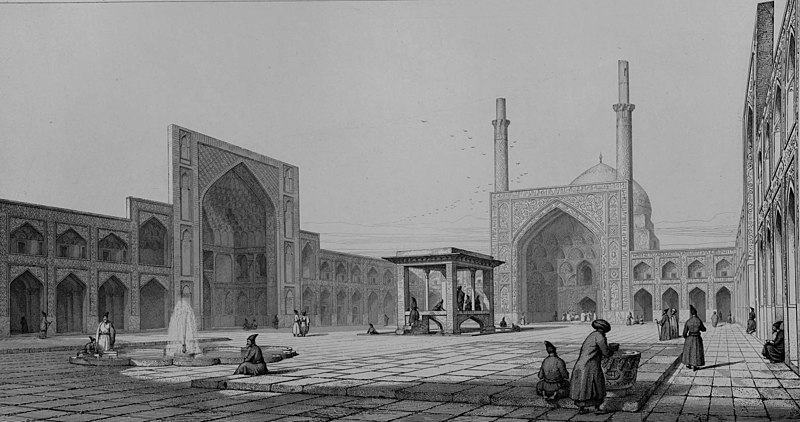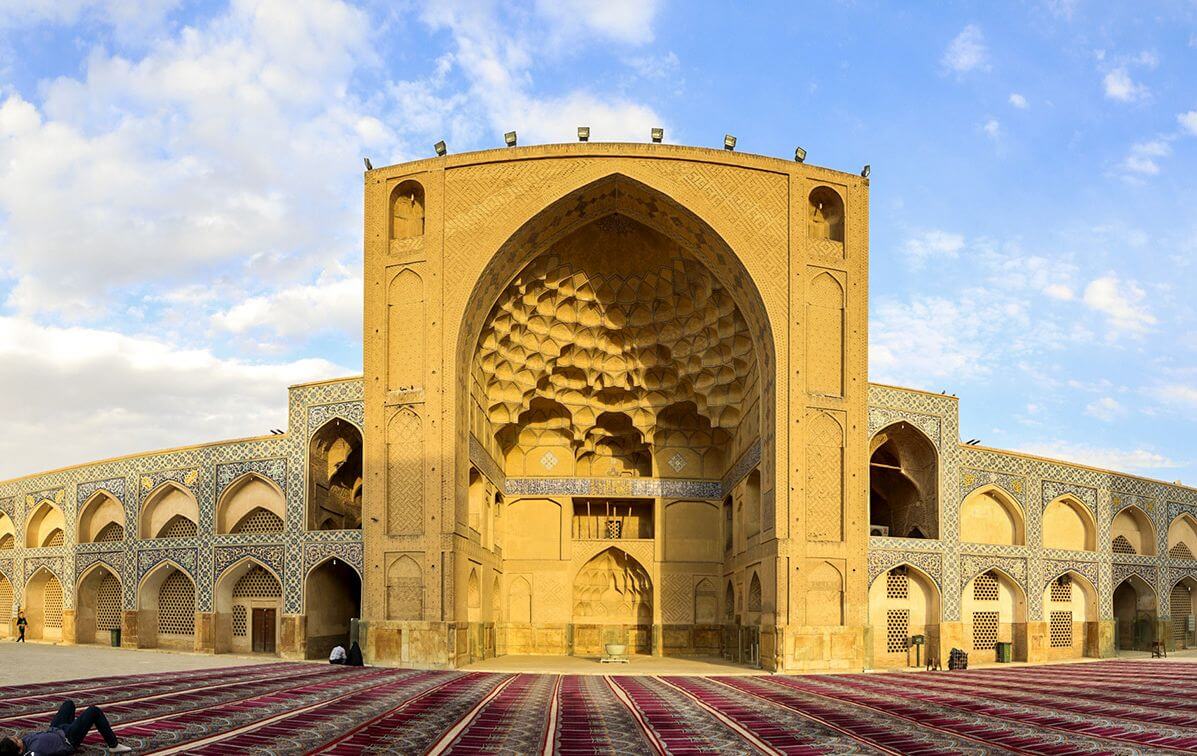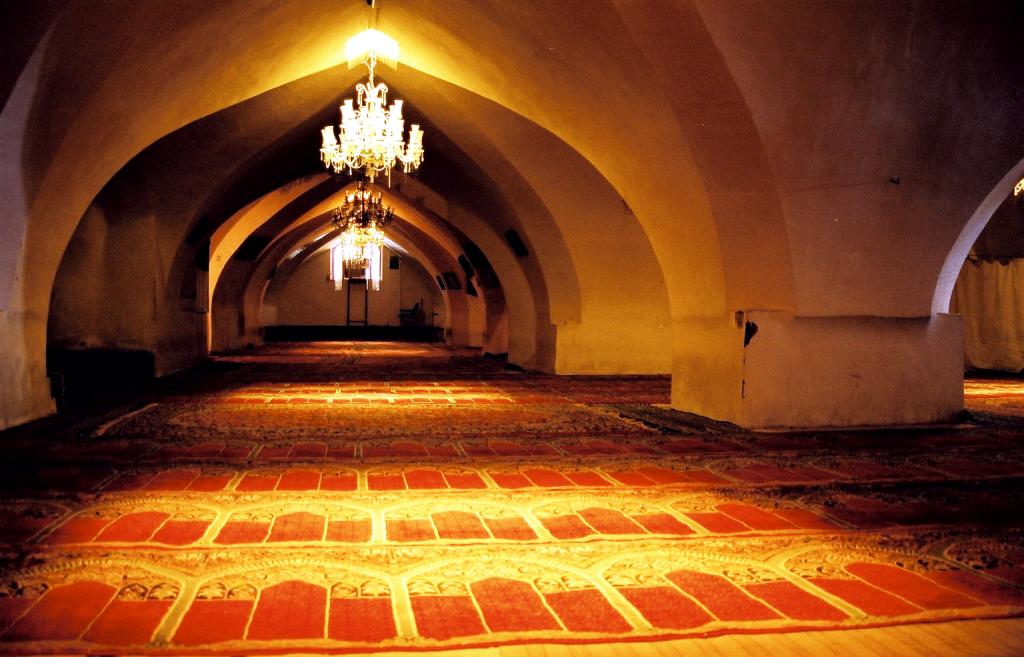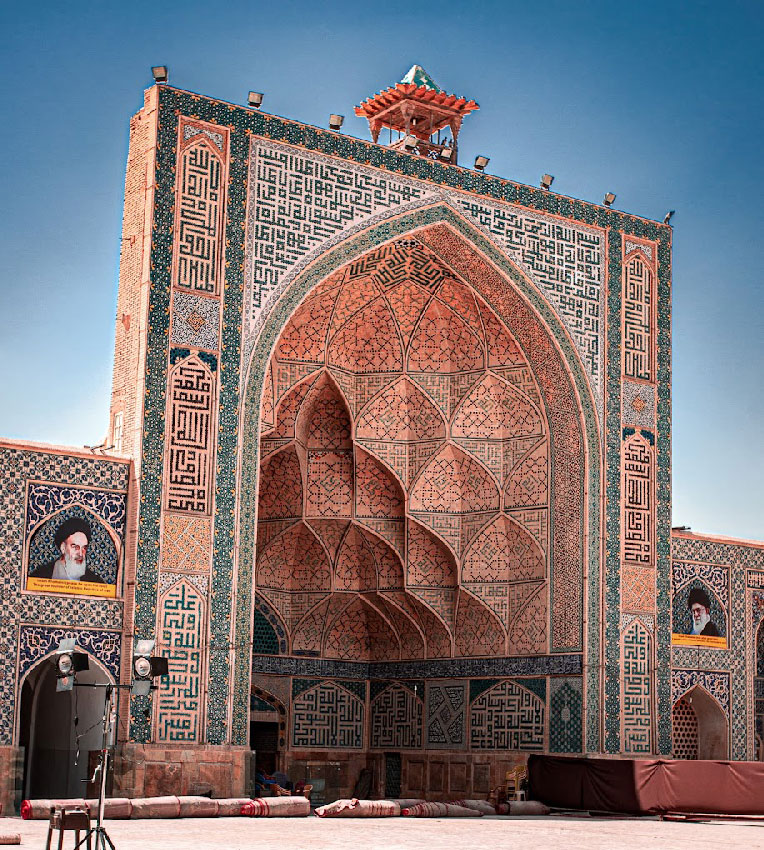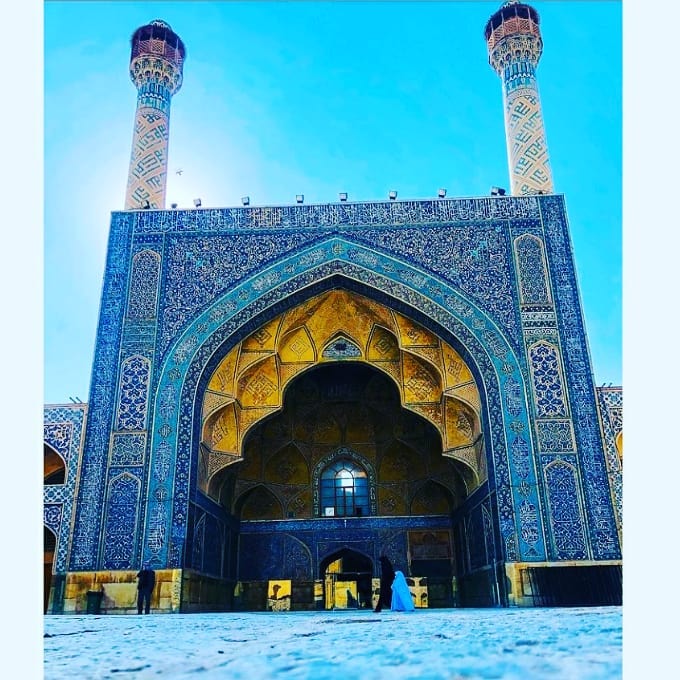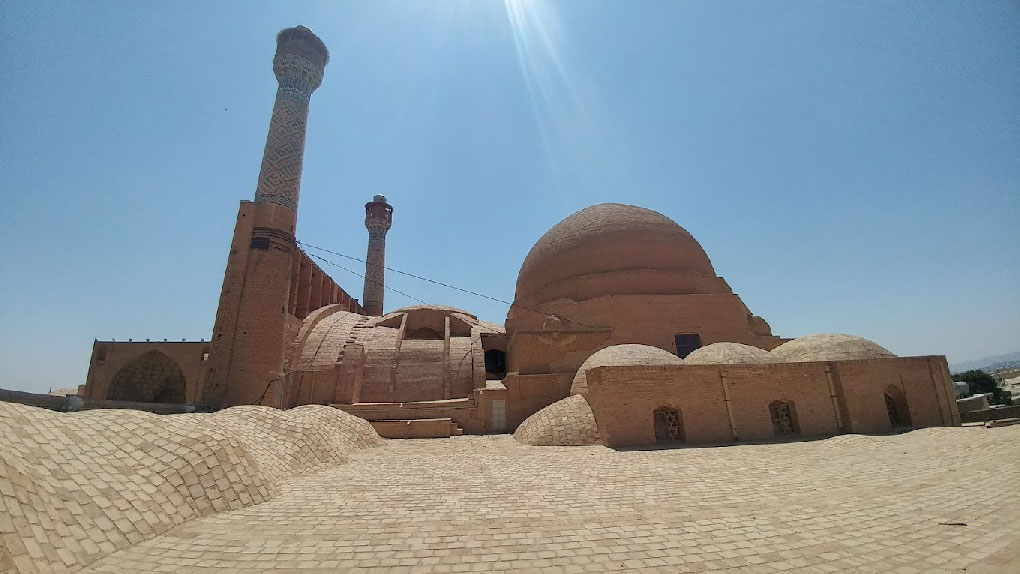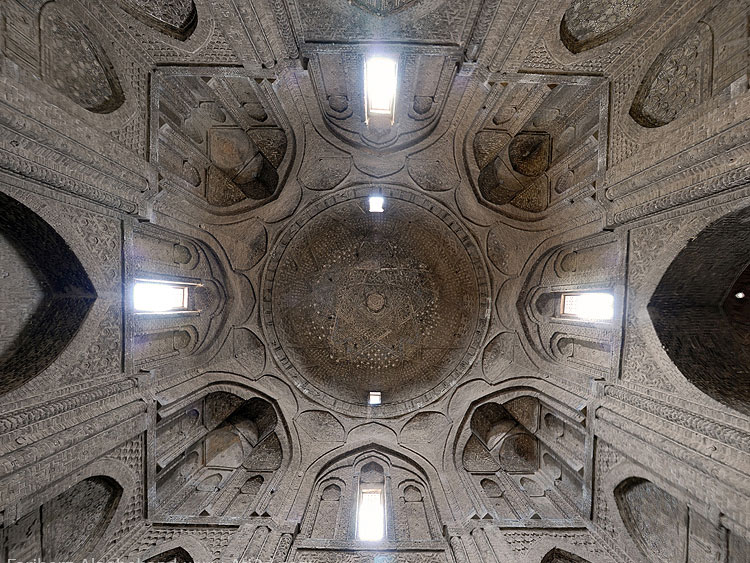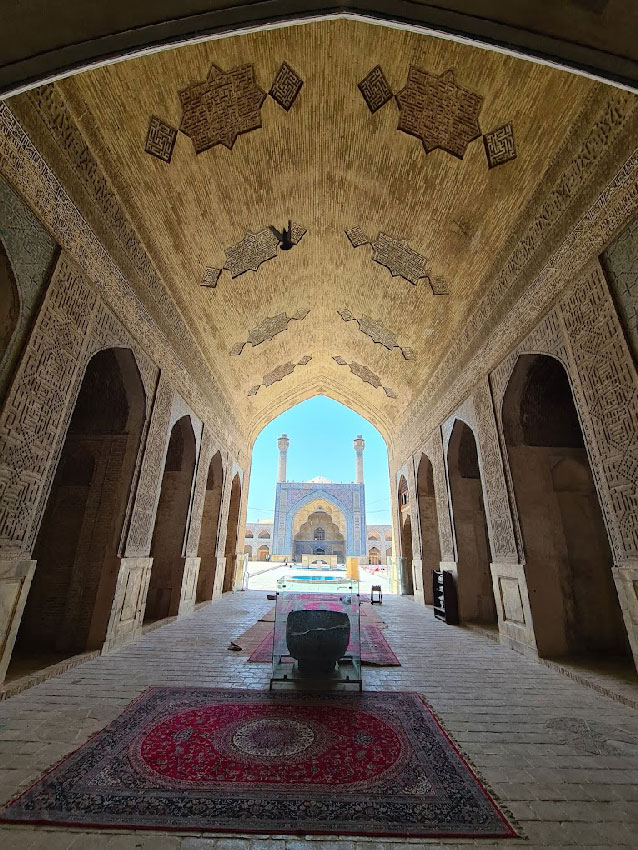“Al-Jayto” altar in the north of “Evan Ustad“.” is located. In the 8th century of Hijri, during the rule of the Ilkhans, efforts were made to rebuild various places, and in this period, very prominent buildings with decorative plasterwork were built. In this period, the main facade of the mosque, which is facing the courtyard, was also It was noticed and restored in a “secret” manner by order of Uljaito. The Aljaito Altar is known as an example of these structures whose components are combined with logical precision. This altar is designed with beautiful stucco, plant and geometric motifs. The inscription on the central slab of the upper arch of this mihrab records the construction date and information about its builders. This mihrab was created in 710 A.H. with the help of the minister Mohammad Sawi and the supervision of Azad bin Ali Mastri.
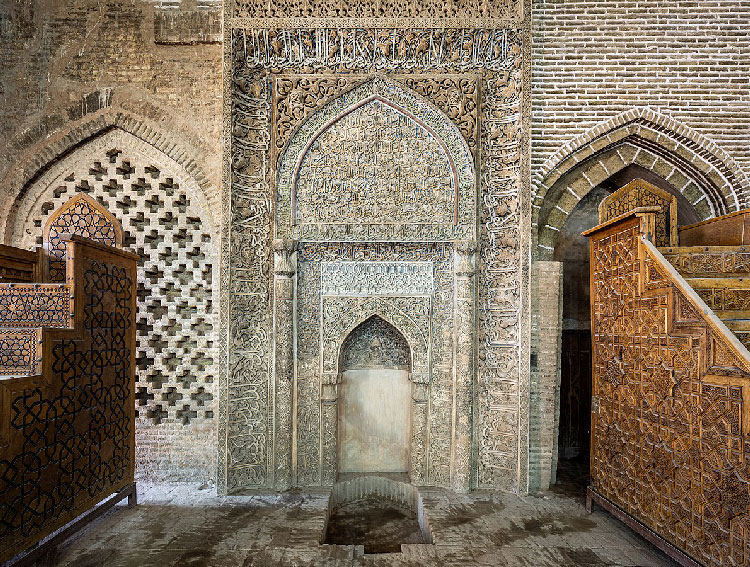
Altar pulpit
On the right side of this mihrab, there is a pulpit, the date of its construction is not mentioned, but this pulpit is known as the most beautiful inlaid pulpit in the complex of mosque buildings.
Al-Jayto altar has four inscriptions; In the first inscription, the name of Sultan Muhammad Khudabandeh is mentioned, which is located above the altar. The other three inscriptions also contain Quranic verses, hadiths and news and are written in thul script. These inscriptions were probably added to the mosque after the fire and include information about the construction of the altar, Sultan Muhammad Khodabandeh and the minister Muhammad Sawi.
Introduction video
Shabestan Oljaito
Also, the al-Jayto nave was located at the time of the construction of the altar. In the past, there was a nave in front of this space, which belonged to the 3rd century AH. About 50 years later, this nave was destroyed and a simple space without columns was created.
Godar believes that the Shabestan al-Jayto building belongs to the Mozafarian period, and considering the design similarities with the Mozafari school building, it may have been built in the same period. He considers the date of construction of this work to be in 851 A.H., which is related to the period of Qutbuddin Shah Mahmud Mozaffari.
In the al-Jayto nave, the main entrance, which is in front of the mihrab, ends at the al-Jayto mosque cistern. On the two entrance panels, phrases from the Qur’an are given, one of which is “And the mosques are for God, so do not fight with God, Ahadah Sadqullah Al-Azeem.” Cited. Also, the phrase written by Seyyed Mahmud Naqash in 851 A.H. refers to the praise of Hossein bin Ustad Shah Mirzai.
